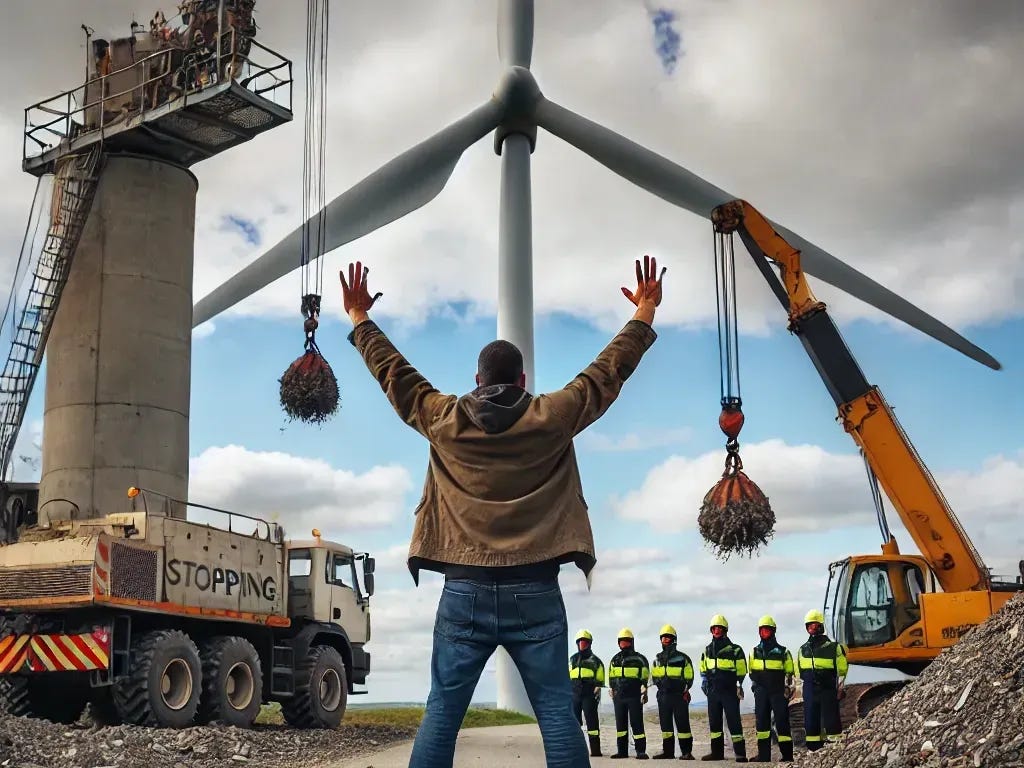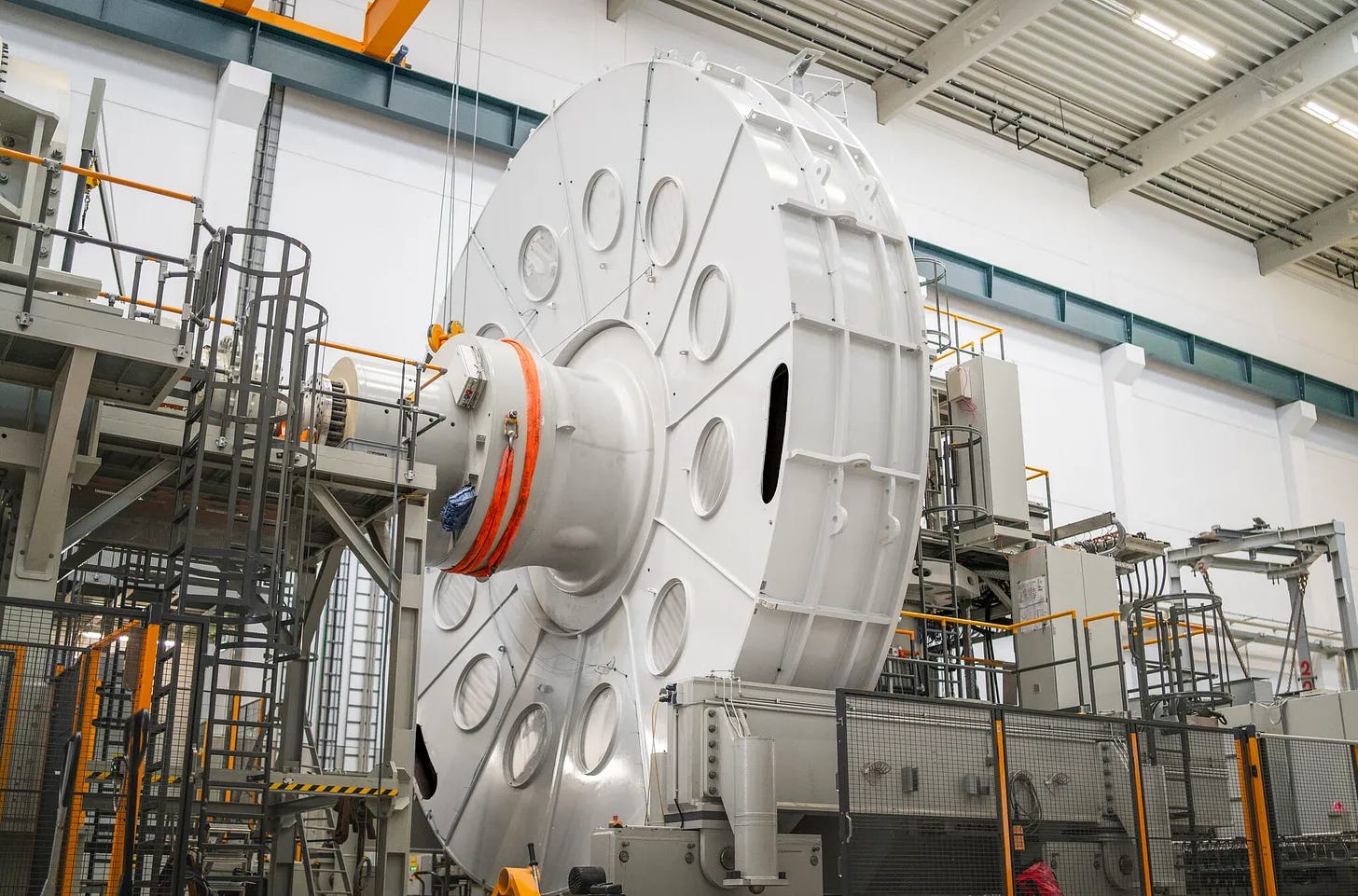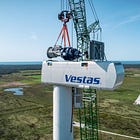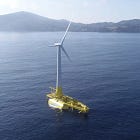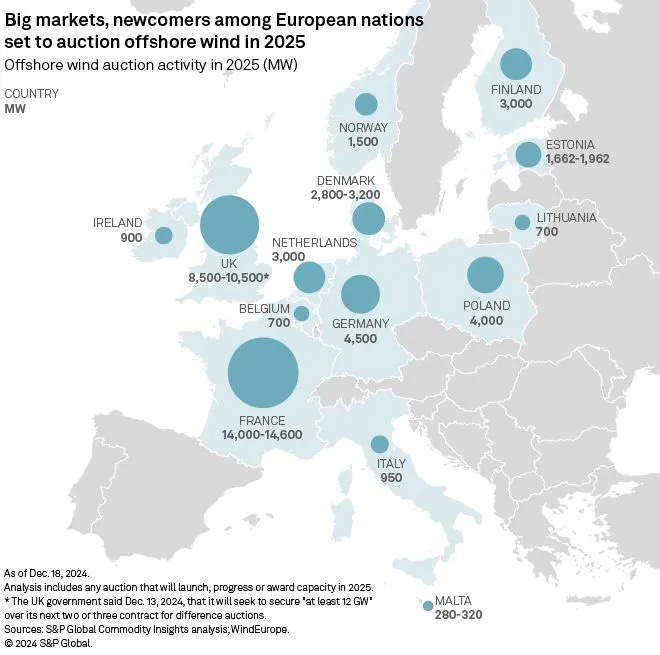Windletter #100 - There are people saying wind turbines should be torn down. Spoiler: it won’t happen
Also: Gazelle Wind Power secures funding round, manufacturer Eno Energy, a wind energy video game, and more.
Hello everyone and welcome to a new issue of Windletter. I'm Sergio Fernández Munguía (@Sergio_FerMun) and here we discuss the latest news in the wind power sector from a different perspective. If you enjoy the newsletter and are not subscribed, you can do so here.
Windletter is sponsored by:
🔹 Tetrace. Specialized services in operation and maintenance, engineering, supervision, inspection, technical assistance, and distribution of spare parts in the wind sector. More information here.
🔹 RenerCycle. Development and commercialization of solutions and specialized services in the circular economy for renewable energies, including comprehensive dismantling of wind farms and waste management, refurbishment and sale of components and wind turbines, management and recycling of blades and others. More information here.
Windletter está disponible en español aquí
Most read from the latest edition has been: the video of the operation of IdentiFlight's bird detection system, Windey's 15 MW floating wind turbine, the first nacelle manufactured by Goldwind in Brazil.
Let's go, now yes, with the news of the week in this news edition number #100. I already warn you that the main topic is a bit different from usual.
💨 There are people saying wind turbines should be torn down. Spoiler: it won’t happen
In recent weeks, wind energy has become a symbol of rejection for a certain part of the political spectrum, which overnight has found in wind turbines a kind of scapegoat onto which they can project many of their problems.
In general, as is well known, political parties need to create common enemies to blame for all possible evils. It is always easier to rally voters around a common enemy (real or imaginary). This time, wind power has taken the hit.
It all started with Donald Trump calling wind turbines "garbage" and "whale killers". A discourse that, in a display of originality and as usual, has been imported into Europe—sometimes with an added twist for good measure.
The latest absurdity comes from Germany's AfD, which has even spoken of tearing down wind turbines, going so far as to label them "the shame mills." Clearly, this is rhetoric based more on electoral calculations and narrative-building than on reality. Why just copy the original when you can take it even further?
I wouldn’t be surprised if another party comes along and outflanks them from the right, saying not only should wind turbines be torn down, but they should be bombed. That’s the thing about senseless absurdities—there’s always room for a bigger one.
Jokes aside (or maybe not, who knows), I think it’s perfectly fine for anyone to be against wind energy. Of course. What I don’t find so acceptable is the lack of arguments and the populist rhetoric with no foundation whatsoever.
I wonder in whose brilliant mind it seems like a good idea to tear down wind turbines in a country that has shut down its nuclear plants, that relied on cheap Russian gas it no longer has, and whose only alternative is to extract and burn coal in massive quantities.
Even leaving ideology aside, any simple analysis could conclude that installing wind turbines in Germany is a good idea. And on top of that, with domestic industry. But of course, it probably doesn’t bring as much electoral gain.
The reality is that in times of social media and culture wars, everything is black or white. There is neither time nor interest in having calm debates based on data and solid arguments.
Not to mention that no one—absolutely no one—actually believes that a single wind turbine will be torn down due to political decisions. Just today, I heard the phrase: "As long as people hear the music they want to hear, they don’t care at all if nothing actually happens afterward." Well, there you have it.
In these times of political fiction, what truly matters are the headlines and the simple ideas that stick in the public imagination. Any excuse is good enough to go after renewable energy and keep gathering votes.
And let’s be clear—on the other end of the spectrum, things aren’t much better, with the NIMBY philosophy, the rejection of everything, degrowth ideology, and the dream of returning to caves.
What are we doing wrong?
♻️ Manufacturing a blade with fiberglass from recycled turbine blades
Lately, there has been a lot of talk about recycling wind turbine blades and reusing their materials in other sectors. In fact, in edition #95, we discussed the Second Wind Project, a collaboration between Siemens Gamesa and Resolve Composites, which involved building a ship using fiberglass recovered from wind turbine blades.
However, I believe this is the first time there has been talk of manufacturing wind turbine blades using recycled fiberglass from other wind turbine blades. And that is precisely what Siemens Gamesa has announced.
SGRE is manufacturing blades for Ørsted’s Gran Changhua wind farm using fiberglass recovered from decommissioned wind turbine blades.
This has been made possible thanks to the work of the DecomBlades association, which includes Vestas, LM Wind Power, Ørsted, and SGRE itself, among others. The fiber recovery process ensures that the fibers are not damaged, allowing them to be reused in the production of B115 blades for the SG14.0-236 model.
Without a doubt, this is a very interesting announcement that takes another step forward in blade recycling.
⚡ Enercon progresses with the DD generator testing of its E-175 EP5 E2
Enercon is currently testing the generator of its latest onshore model: the E-175 EP5 E2. The German OEM has announced the first energization of the generator at the Aurich test bench. Additionally, it has shared a spectacular image, showcasing its impressive diameter.
The E-175 EP5 E2 is the natural evolution of the E-175 EP5, now featuring a new permanent magnet generator with an external rotor and a larger diameter, while also increasing its nominal power to 7 MW “in its standard configuration.”
Enercon is now preparing to assemble the first prototype, with all logistics already in place, having even conducted an initial transport simulation. The installation is scheduled for next February.
To facilitate transportation, the generator is divided into two parts—likely because transporting the entire disk would cause significant challenges (or might simply be impossible) in many markets and locations.
🌊 Chinese manufacturer CRRC installs a 20 MW floating wind turbine
Although Europe has been the dominant force in floating wind technology, in recent times we are seeing new developments emerging from China in this field.
Recently, we discussed Mingyang’s spectacular twin-rotor prototype (2 × 8.3 MW) and the fact that Windey had introduced a 16 MW floating unit.
The latest development comes from the Chinese industrial giant CRRC, which has unveiled a 20 MW floating wind turbine prototype—making it the most powerful floating technology unit in the world.
This model also features a rotor diameter of 260 meters, a hub height of 151 meters, a maximum blade tip height of 320 meters, and a swept area of 53,000 m².
💰 Gazelle Wind Power secures €11.4 million in a new funding round
Gazelle Wind Power is a Dublin-based startup developing an innovative platform for floating offshore wind. Its platform design is quite unique, featuring moving parts and looking unlike anything currently known in the industry.
The company is now actively developing a 2 MW prototype, which will be installed in Aguçadoura, Portugal.
To continue advancing its business plan and operations, Gazelle Wind Power has just closed a new funding round of €11.4 million.
The round was led by Indico Capital Partners, one of Portugal’s leading venture capital funds. The investment also includes participation from other investors such as Grupo DST, August One, Wah Kwong, and E2IN2.
Taking advantage of the funding round, Indico Capital Partners (one of the investors) conducted an interview with CEO Jon Salazar, which was published on Medium. It’s worth reading to better understand Gazelle Wind Power's story, its value proposition, and its upcoming goals.
📍 The offshore auctions coming to Europe in 2025
The team at S&P Global Commodity Insights has compiled a list of all the offshore wind auctions set to take place in 2025 across Europe, totaling 45 GW. They have also decided to present this data in a map, offering a clear visual overview at a glance.
As shown, France leads the auction schedule with approximately one-third of the total capacity on offer—an impressive 14 GW, a significant portion of which will be for floating wind, as we previously discussed in Windletter #99.
The French government aims to establish the country as one of the key European players, alongside the United Kingdom, Germany, and the Netherlands. Other nations such as Norway, Ireland, Belgium, and Poland will also participate with new or inaugural tenders.
Both governments and industry should strive to avoid repeating the auction failures of 2024, including the 3 GW tender in Denmark that received no bids.
The article provides a very good overview of the European offshore sector and the reasons why different countries have either failed or succeeded in auctions.
🌀 Eno Energy installs the first prototype of its Eno 160-6.00 MW
The wind sector never ceases to surprise. Rarely does a week go by without me discovering some curiosity, a historical document, or even coming across a wind turbine manufacturer (extinct or not) that I hadn’t heard of before.
That’s exactly what happened thanks to the Instagram account of New York Tobi, a wind energy enthusiast who shares spectacular photos of wind turbines. New York Tobi has photographed the first prototype of the Eno 160-6.00 MW from the German manufacturer Eno Energy.
According to their website, Eno Energy was founded in 1999 and is based in Rostock, Germany. The company has a track record of 800 MW installed, with a total of 380 wind turbines deployed under EPC contracts (including all associated civil works and infrastructure).
Its wind turbine portfolio includes rotors of 114, 126, 140, 152, and 160 meters, with power ratings ranging from 3.5 MW to 6 MW.
In terms of technology, these turbines feature an electrically excited synchronous generator (without rare earths), a gearbox, and a full converter. If my memory serves me right, no other manufacturer in the market currently uses this configuration.
I wonder what unique value a manufacturer like Eno Energy can offer to survive in such a competitive wind market. They probably compete for small-scale contracts with clients who have limited experience and/or infrastructure, where traditional OEMs are not particularly interested in entering.
Maybe some of you were already familiar with this manufacturer, but honestly, I don’t recall ever coming across them before. Here’s more information about the Eno 160-6.00 MW:
🎮 Wind Turbine Simulator: the wind energy video game you never expected to see
A video game about wind energy? That’s exactly what Roberto Echeverría Delgado has developed—and he has kindly shared it with everyone on his LinkedIn account.
The story behind the game's creation is truly heartwarming, as Roberto’s goal was to explain wind turbine control concepts to his son in a simple and engaging way.
The result is a small simulation game where you can interact with a wind turbine and see in real time how it responds to the wind. The game allows you to control the pitch angle and torque of the turbine, with the objective of keeping it within optimal operating parameters.
Roberto used OpenFAST (a simulation tool he uses for work) along with Unreal Engine (a tool he enjoys as a hobby) to create this interactive simulation.
The game has been a huge success on LinkedIn, where many users have left suggestions in the comments section. Here’s the video Roberto shared:
I’ve tried it myself, and it’s undoubtedly an incredibly educational tool for understanding how a wind turbine works. I encourage all of you to give it a try (link here).
We’ll be keeping an eye out for updates, and congratulations to Roberto on this fantastic initiative!
Thank you very much for reading Windletter and many thanks to Tetrace and RenerCycle, our main sponsors, for making it possible. If you liked it:
Give it a ❤️
Share it on WhatsApp with this link
And if you feel like it, recommend Windletter to help me grow 🚀
See you next time!
Disclaimer: The opinions presented in Windletter are mine and do not necessarily reflect the views of my employer.






